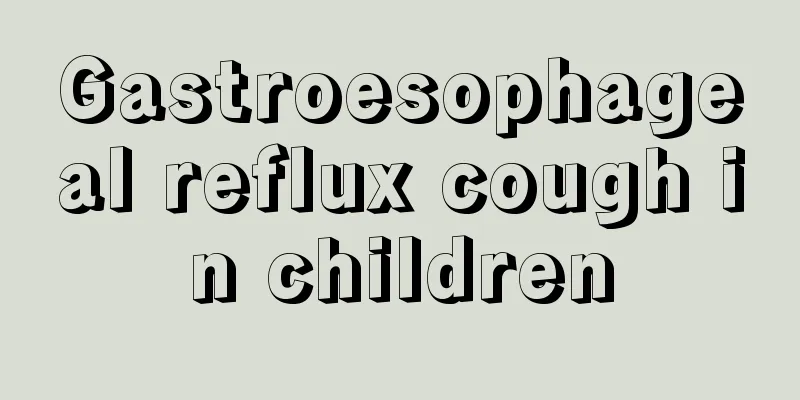Why is there red blood on the baby's face?

|
When our baby is just born, we usually look at his face first to see if there are any obvious birthmarks, and then check if he has a cleft lip. If not, then everything is fine. However, some parents now find that their children have fine red blood streaks on their faces. They are not particularly obvious, but they can be seen very clearly. They always don’t want their children to have these blood streaks, which will affect their image. So what’s the matter with the red blood streaks on the baby’s face? Let’s learn more about it! Hereditary red blood streaks on the baby's face: Hereditary red blood streaks on the baby's face is an autosomal dominant disease, characterized by dilation of capillaries and venules accompanied by bleeding in the skin, mucous membranes and internal organs. The cause of the disease is still unknown. The basic pathological changes are congenital capillary contraction and relaxation defects, which are manifested by thin blood vessel walls. The walls of some capillaries, arterioles and venules are composed of only a layer of endothelial cells, and are surrounded by only a layer of muscleless, inelastic connective tissue. The blood vessels cannot contract, resulting in hemangioma-like enlargement of the capillaries, arterioles and venules, and arteriovenous fistulas may occur. Congenital red blood streaks on the baby's face: Hereditary red blood streaks on the baby's face are caused by congenital malformation of capillaries and weak blood vessel walls, so that they cannot contract. This disease usually occurs on the face, neck, back of the head, and scalp at birth or shortly after birth. It can be unilateral and scattered, or bilateral and multiple. Initially, there is a lesion of varying sizes, light red, dark red, or purple-red on the skin or mucous membrane, ranging from the size of a needle tip to a limb or half of the trunk. After crying, the color deepens, the boundaries are clear, the shapes vary, it does not protrude above the skin, but is higher in some areas. After pressure, it fades partially or completely, and the surface becomes smooth. As age increases, children or young adults may develop symptoms or nodular lesions, mostly occurring in the lower legs and feet, which may manifest as painful purple-blue nodules and plaques, which may also ulcerate. Symptoms of red blood streaks on baby's face: The cause of hereditary red blood streaks on baby's face is unknown. The lesions resemble spiders in shape, and radial capillary dilation can be seen with the naked eye, resembling spider legs. Slightly raised, arterial pulsation can be seen after compression. The sizes vary, with the largest being 1~1.5cm in diameter. It often occurs on the face, neck, and hands, but can also occur on the upper trunk. Most patients have a single lesion, often on one side. If multiple lesions occur, it is necessary to rule out liver disease. For example, spider capillary dilation occurring in the nasal mucosa and lips is difficult to differentiate from hereditary hemorrhagic capillary dilation. Now we have the answer to why the baby has red blood streaks on his face, but we should still follow the doctor's advice on how to treat it. We need to go to the hospital for a detailed examination. No matter how old the baby is, it would be best if the red blood streaks can disappear on their own. But if they don't disappear, then we should treat it well. |
<<: What to do if the baby doesn't eat for two months
>>: What's wrong with the baby's laxatives?
Recommend
How to care for baby's otitis media, parents should remember these steps
If the baby has otitis media, parents must not be...
What are the physical methods of cooling down a baby's fever?
Children's bodies are not as resistant as adu...
Why are baby's legs shaking?
Every child should grow up healthy and happy. How...
What's good to eat to stimulate baby's appetite?
It is a very bad thing if a baby does not like to...
Child snoring while sleeping
Generally, men will snore after falling asleep la...
How to take care of a newborn baby?
How to take care of a newborn baby is a topic tha...
Why does my baby have a hoarse cough?
For young parents, the baby's weak resistance...
What to do if a child has a persistent high fever
When a child has a high fever, it is necessary to...
The best way to treat stuttering in children
Stuttering is very common. There are many reasons...
Teach children or destroy children. Do you really understand the world of boys?
Nowadays, more and more young couples think that ...
How is Mycoplasma pneumoniae infection treated?
Mycoplasma pneumoniae infection is a disease caus...
Taboos of leukoplakia at six years old
Children need to get the diphtheria and pertussis...
Pediatric variant asthma
The probability of children getting asthma is als...
Two-month-old baby is very fussy when sleeping
A two-month-old baby is still relatively young. I...
Introduction to red tip of baby's tongue
A big reason why the tip of a baby's tongue b...









